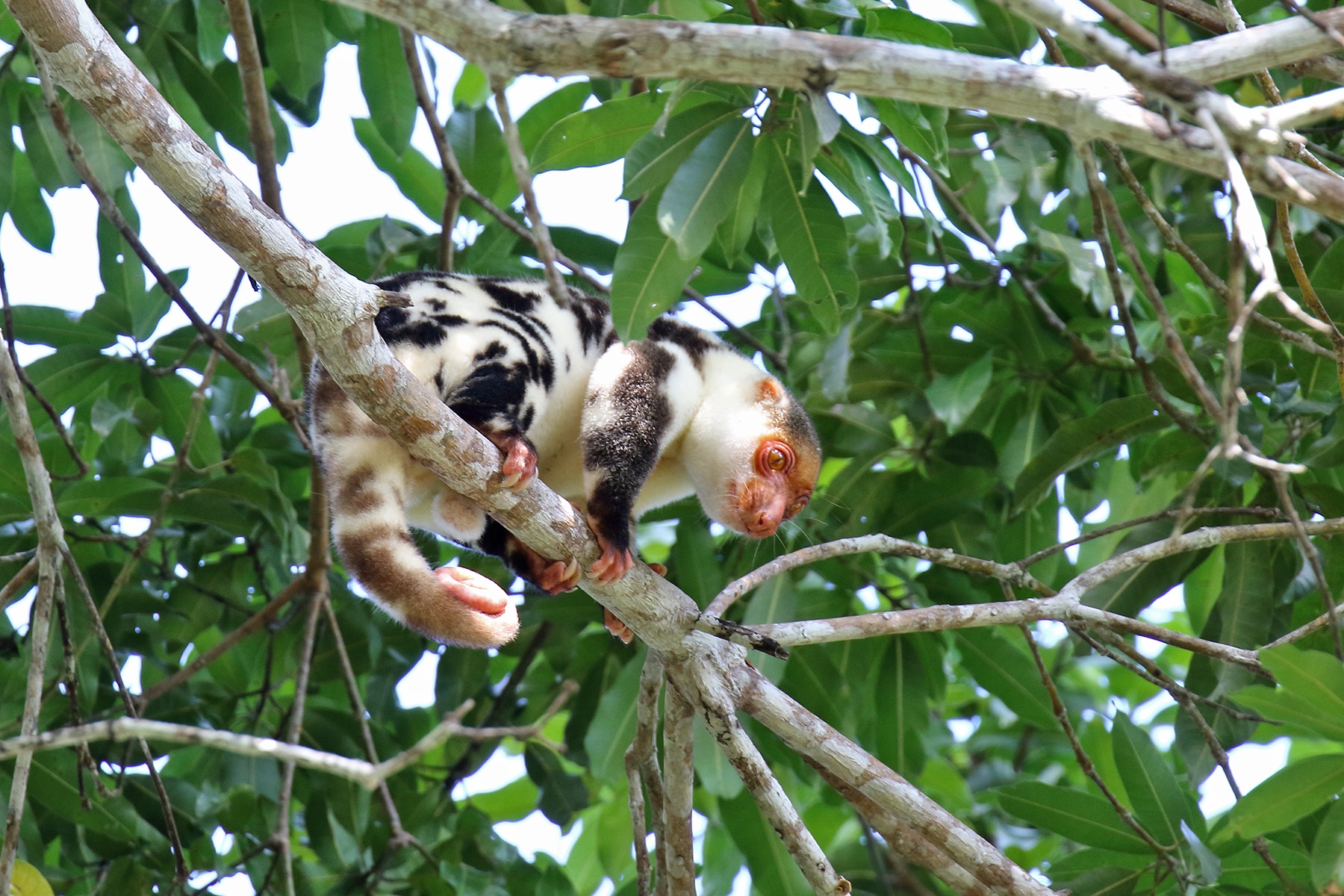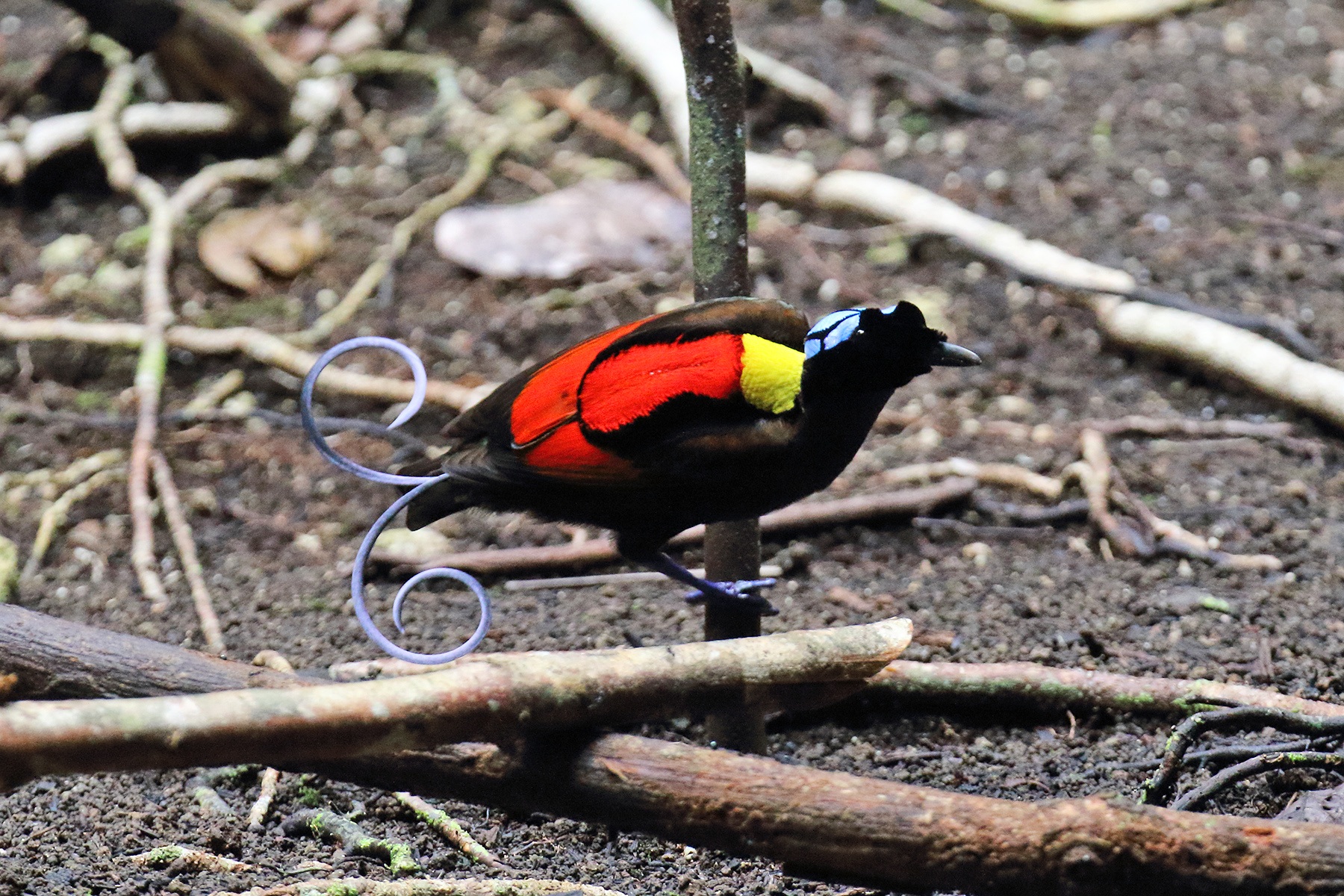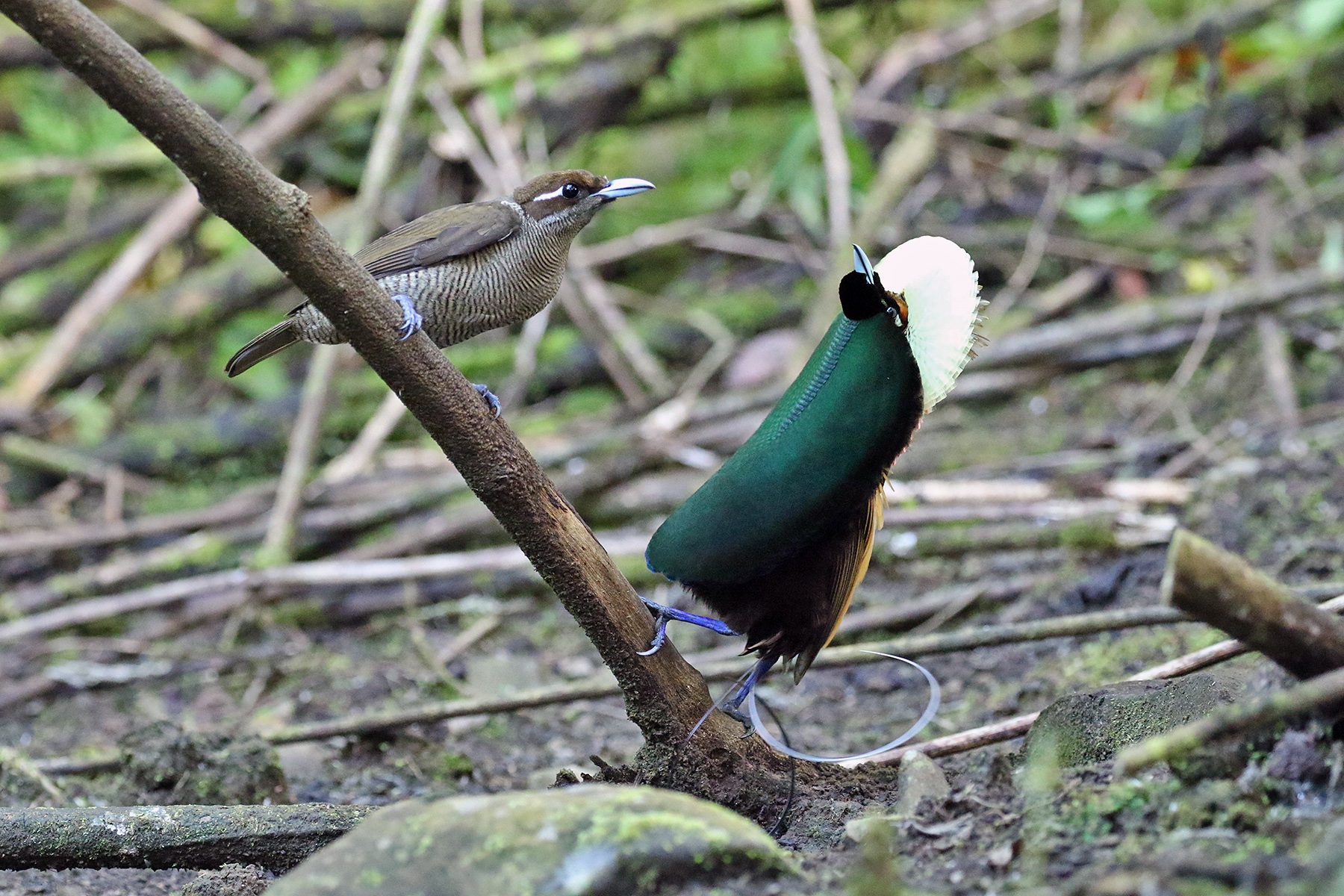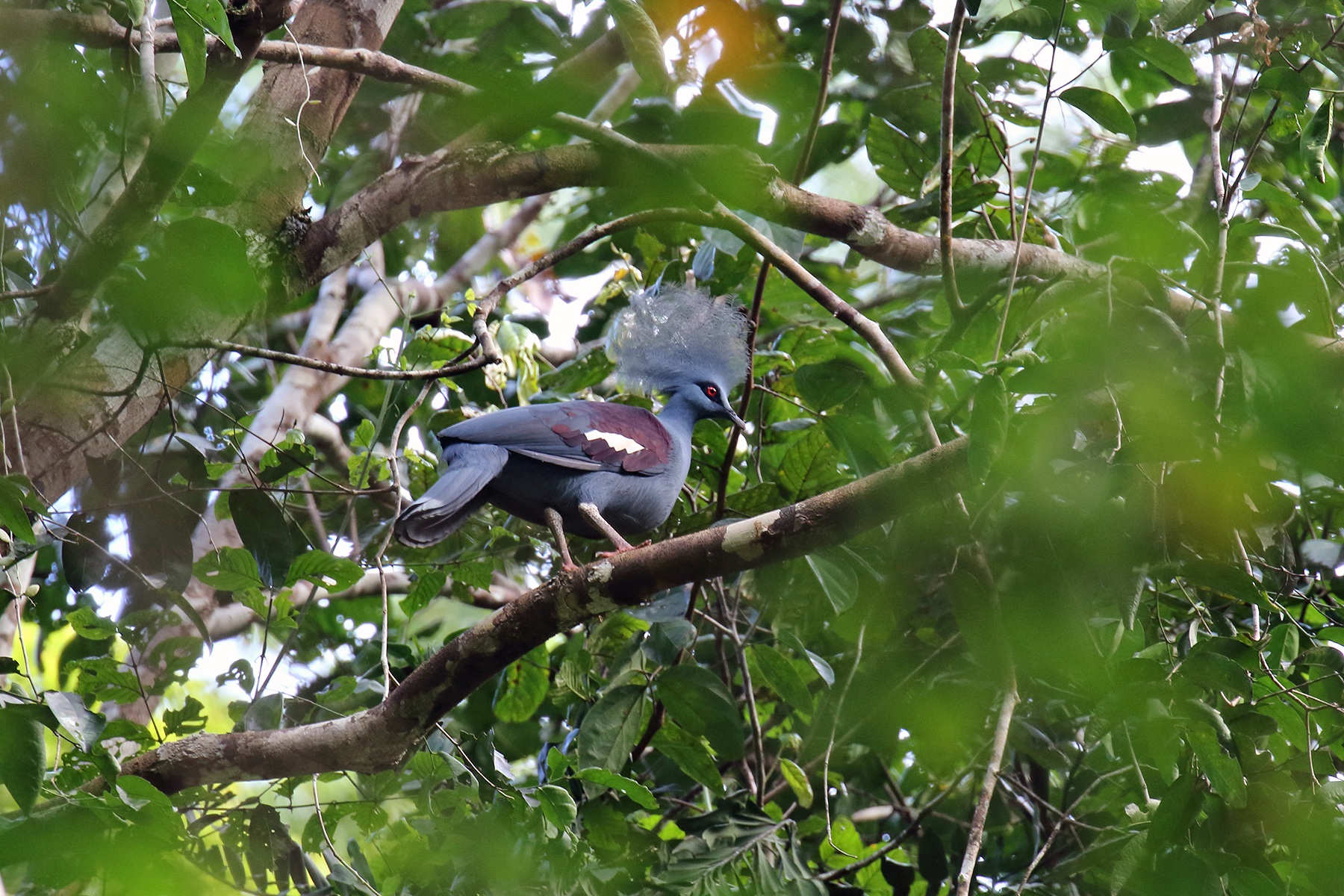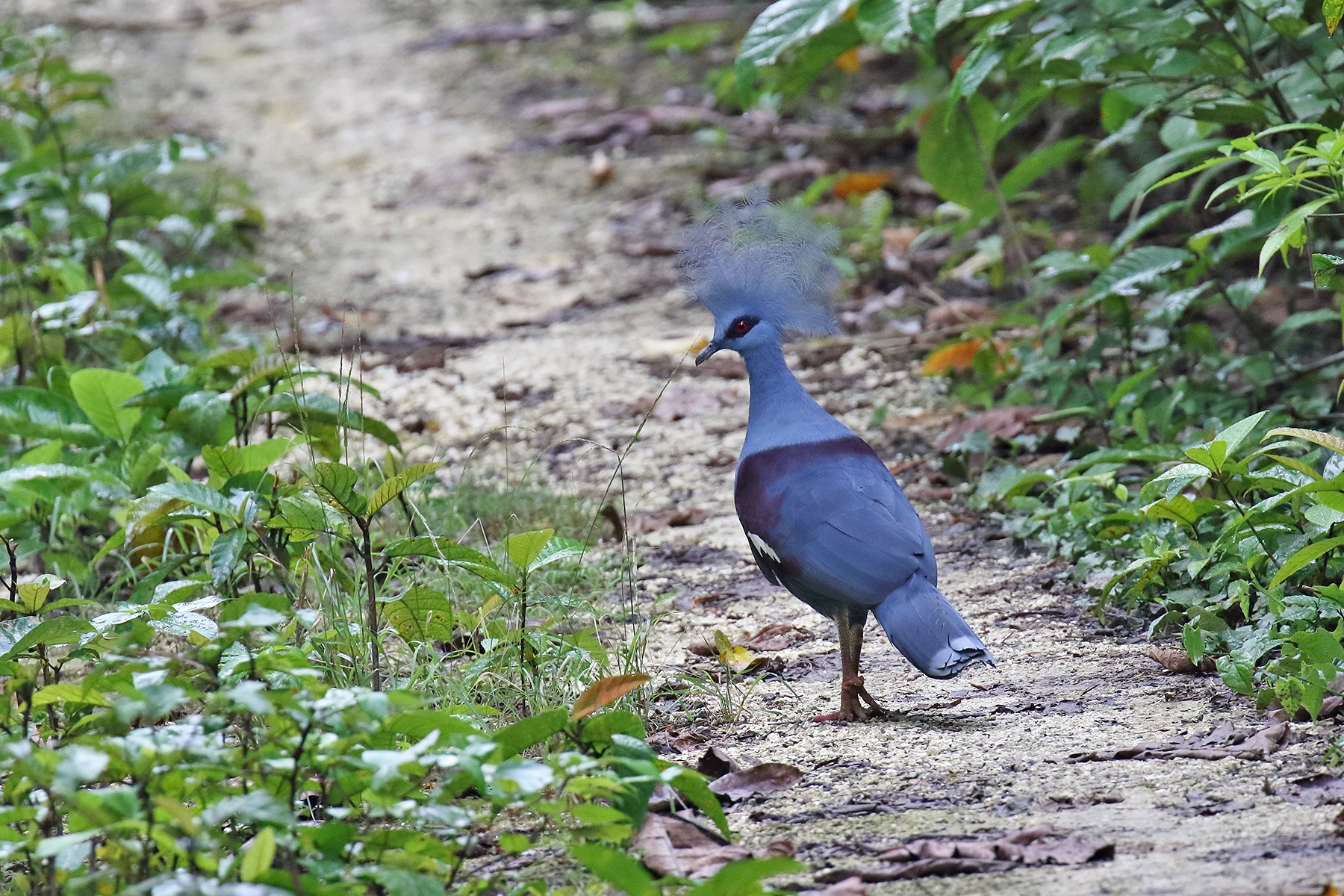WEST PAPUA’S VOGELKOP & RAJA AMPAT ISLANDS TOUR: DETAILED ITINERARY
West Papua (Vogelkop & Raja Ampat): Day 1 Our tour begins this morning at Manokwari on the western shore of Geelvink Bay on the northern coast of West Papua.
From Manokwari we will drive inland to the village of Mokwam, situated at 5250ft (1600m) in the Arfak Mountains. We will spend five or six nights in buildings in one or two of the local villages, but we will also camp for one or two nights higher up in the mountains. In the late afternoon, we will start our exploration of this remote area.
West Papua (Vogelkop & Raja Ampat): Days 2-7 In these seldom-visited mountains we shall hope to find many montane species, including some of New Guinea’s least-known birds. On the high ridges, the shy and scarce Black-billed Sicklebill utters its Whimbrel-like song and Arfak Astrapias can be found foraging along the moss-bedecked branches. Even less well-known is the Long-tailed Paradigalla, which has only been seen by very few birders since it was first described. Whilst uncommon and wary, it draws attention to itself by its powerful monotone whistle and can sometimes be seen feeding in Pandanus and other fruiting trees.
Females and immature males of the endemic Western Parotia are fairly common but to see an adult male it is usually necessary to locate a display ground by following up their harsh calls. Hides have been built at a couple of these dance courts and one of the highlights of the tour will be observing the incredible display of this exquisite species. To watch the dazzling ‘ballerina dance’ of this fabulous species at very close range is totally out of this world and has been described as one of the climaxes of a birding career.
Another characteristic species of the area is the endemic Vogelkop Bowerbird, which not only builds a magnificent bower decorated with colourful flowers, fruits and mushrooms but can imitate the songs of nearly all other species. In recent times a display site of the amazing Crescent-caped Lophorina has been found and if it remains active we will surely pay it a visit.
In the mid-montane forest, the feeding flocks hold Sclater’s Whistler and the pretty Goldenface, as well as the endemic Vogelkop Whistler. Magnificent Birds-of-paradise occasionally join these flocks, but more usually call from close to their display grounds. A hide has been built overlooking the dance court of this lovely species, so we should be able to admire a male in full swing. Shy Arfak Catbirds attract attention by their mewing calls from the canopy. Attractive Spotted Jewel-babblers are fairly regular in these moss-festooned forests and with a modicum of luck, we will observe this wonderful but shy species in all its glory. Sometimes our man on the spot knows of a day roost of the magical-looking Feline Owlet-Nightjar or the cute Mountain Owlet-Nightjar.
After climbing well into the mountains we shall come to a clearing on the steep slopes of Gunung Nadim. From here, at dawn, before the clouds come in, the view down to the lowlands is magnificent. The forest here holds feeding flocks which include Black Monarch, the endemic Vogelkop Scrubwren, Black Pitohui and Red-breasted Pygmy Parrot.
Eventually, we shall reach the summit ridge, where Black Sicklebills sing from favourite perches and we may see the male making its amazing display on a favourite branch. Along the ridge, Orange-crowned Fairy-wren and Smoky and Ashy Robins are to be seen, while attractive Tit Berrypeckers can be found in fruiting bushes. Flowering trees attract Arfak (or Western Smoky) Honeyeaters, and Cinnamon-browed and the endemic Vogelkop Melidectes.
Other species we will be looking out for include White-throated Pigeon, Bronze Ground Dove, Rufescent Imperial Pigeon, Josephine’s, Papuan and Yellow-billed Lorikeets, Blue-collared Parrot, White-eared Bronze Cuckoo, Grey-green Scrubwren, Garnet, Green-backed and White-rumped Robins, Hooded Pitohui, Olive-crowned Flowerpecker, Black-fronted White-eye, Dwarf Longbill, and Rufous-sided and Mountain Honeyeaters.
At night we will search for the delightful Papuan Boobook. If we are particularly lucky we will chance upon a rare marvel like Papuan Eagle or White-striped Forest-Rail.
If we have time we will visit a different area in search of the rare Grey-banded Mannikin.
Mammals are scarce here, but we stand a fair chance of encountering the adorable Red-bellied Marsupial Shrew.
West Papua (Vogelkop & Raja Ampat): Day 8 Today we return to Manokwari for an overnight stay. We will spend most of the day birding along the road, looking for species that favour lower elevations, including the almost fluorescent Masked Bowerbird.
West Papua (Vogelkop & Raja Ampat): Day 9 Today we will either catch a flight direct to the island of Waigeo in the Raja Ampat (or Raja Empat) archipelago or else fly to the bustling town of Sorong at the head of the Vogelkop Peninsula and take the ferry. We will stay on Waigeo for three nights. Depending on air and ferry schedules, there may be some opportunity for birding somewhere today.
West Papua (Vogelkop & Raja Ampat): Days 10-11 The island of Waigeo to the northwest of Sorong is seldom visited. Still forest-covered and very sparsely populated, this island holds several species rare or absent on the mainland. In the lowland forest, Red Birds-of-paradise, endemic to the islands of Batanta and Waigeo, can be watched displaying in some of the taller forest trees. Purple-tailed Imperial Pigeons can be found in fruiting trees and the tiny Yellow-capped Pygmy Parrot might be seen hanging from the trunk of a forest giant. Another key species is the endemic Raja Ampat Pitohui.
A primary goal here is to find the brilliantly plumaged Wilson’s Bird-of-paradise, without a doubt one of the most beautiful birds on the planet. In the early morning, one or two males and several females gather at display grounds; usually, an area cleared of all leaf litter under a tangle of vines, where the male calls vigorously and displays to the females as they arrive. Hides have been built overlooking these dance courts, so we should be able to watch these stunning birds at our leisure.
With a modicum of luck, we will hear the low thrumming call of Western Crowned Pigeons and then track one or more down. These huge creatures usually flush up with explosive wing beats and find a perch from which to nervously watch their pursuers.
Other birds we may well see here include Dusky Megapode, Pygmy Eagle, Great-billed Parrot, Common Paradise Kingfisher, Papuan Pitta, Pale-billed Scrubwren, Green-backed Gerygone, Frilled Monarch, Grey Whistler, Yellow-bellied and Pygmy Longbills, Puff-backed Meliphaga, Tawny-breasted and Spotted Honeyeaters, and Torresian Crow. We will also have a chance for Brown-headed Crow. In the forest, one of the most frequent songs to be heard is the repeated descending trill of the Chestnut-breasted Cuckoo.
Along the shoreline, Great-billed Heron, Eastern Reef Egret, Raja (or White-headed) Shelduck, Eastern Osprey, White-bellied Sea Eagle and Beach Kingfisher can all be found.
One afternoon we will travel by boat to some islets where we should find Pied and Spice Imperial Pigeons, and Violet-necked Lory, as well as a roost of Great-billed Parrots.
West Papua (Vogelkop & Raja Ampat): Day 12 Today we will return by ferry to Sorong looking out for Lesser Frigatebird, the elegant Black-naped Tern, Greater Crested Tern and other seabirds during the journey.
After a quick lunch, we will continue eastwards to the Klasow Valley where we will stay for two nights at Malagufuk village. The village which will be hosting us lies in the middle of a large tract of superb lowland forest, the likes of which are always extremely hard to access in New Guinea – often soon after a track or village is built in good habitat, the habitat is removed! The locals here however truly value their forest, and the number of remarkable species which are present is a tribute to that.
West Papua (Vogelkop & Raja Ampat): Day 13 In addition to the tame village Northern Cassowaries which come in from the forest to be fed fruit most mornings, the forest holds a good number of these gigantic birds, and we may be lucky enough to come across one on the trails while we are concentrating on our main targets. Pride of place goes to the stunning Red-breasted Paradise Kingfisher, which is usually an ultra-scare or cryptic species, but which has proven to be almost common in the valley. The Vogelkop-endemic Black Lory is another somewhat tricky bird that is much more abundant here than in the degraded forest elsewhere, and we should see multiple parties flying overhead and feeding in the canopy. What truly makes the Klasow Valley special however is the long list of mega New Guinea endemics which have previously been almost entirely unknown and only irregularly occurring elsewhere on the island. Recent explorations of the forest by a handful of intrepid birdwatchers (our leaders included) has yielded repeat, and seemingly regular observations of Forest Bittern, Thick-billed Ground Pigeon, New Guinea Bronzewing, Papuan Nightjar, Papuan Hawk Owl, Black Thicket Fantail, and the somewhat drab but nevertheless exceptional Tawny Straightbill. We will definitely hear the astoundingly common and restricted Red-billed Brushturkey here, and we will hopefully bump into one by walking along quietly, along with four desirable BoPs – King Bird-of-paradise, Twelve-wired Bird-of-paradise, Magnificent Riflebird, and Lesser Bird-of-paradise.
Of course, there are not just rare birds here, and we will also be on the lookout for more widespread species including Large Fig Parrot, Cinnamon Ground Dove, Wompoo, Pink-spotted, Dwarf, Claret-breasted, Beautiful and Orange-bellied Fruit Doves, Purple-tailed Imperial Pigeon, Ivory-billed Coucal, Papuan Spine-tailed Swift, Long-billed and Plain Honeyeater, Papuan Babbler, Rusty Pitohui, Sooty and White-bellied Thicket Fantail, Dwarf Koel, Scrub Meliphaga, Ruby-throated Myzomela, White-eared Catbird, Grey Crow, Olive Flyrobin and Emporer Fairywren.
West Papua (Vogelkop & Raja Ampat): Day 14 After some final birding in the Klasow Valley, we will return to Sorong for an overnight stay.
Our last birding will be spent in Sorong itself at a nice stretch of mangroves where the scarce Blue-black Kingfisher is quite common, and we may also find Little Kingfisher, Pale-vented Bush-hen, Collared Imperial Pigeon, Orange-fronted Fruit Dove, Brown-backed Honeyeater and Streak-headed Mannikin. Soon after the sun comes up here everything disappears, at which point we will return to the hotel to wash and change.
West Papua (Vogelkop & Raja Ampat): Day 15 Our tour ends this morning at Sorong airport.
KOFIAU EXTENSION
West Papua (Kofiau): Day 10 This morning we will board a sturdy boat which will take us to the distant island of Kofiau, a birding location pioneered by Birdquest in 2019. It will take us around four hours to reach this little-visited island and on the way, we will encounter flocks of Red-necked Phalaropes, Common, Little, Bridled and Greater Crested Terns, Lesser and Great Frigatebirds and Pomarine and Parasitic Jaegers (or Pomarine and Arctic Skuas).
Upon arrival, we will transfer to our simple village accommodation for a two nights stay. We should arrive in time for some initial exploration.
West Papua (Kofiau): Day 2 Kofiau is one of the smaller islands in the celebrated Raja Ampat islands and has a surface area of 144 square kilometres (56 square miles). It is situated about 90 km (55 miles) west of the island of Salawati and consists mainly of raised coral limestone with some volcanic hills. Most of the original rainforest was selectively logged in the 20th century, but luckily most of the island is still covered in closed canopy primary and secondary forest.
Kofiau holds two intriguing endemic species: the attractive Kofiau Paradise Kingfisher and the pied Kofiau Monarch. The former species is fairly common in the forest interior and closely resembles the widespread Common Paradise Kingfisher, differing mainly in having a shorter and totally white tail. Like its sister species it is quite vocal and perches quietly in the forest understorey, slowly pumping its tail and occasionally sallying out to catch invertebrate prey. The little known Kofiau Monarch was discovered in 1955 and described in 1959. It favours the lowland forest interior and bears a close resemblance to the widespread Spot-winged Monarch, looking blackish on the upperparts and lacking the distinctive wing spots.
As well as these two major specialities we should also encounter Dusky Megapode, Great-billed Heron, Spectacled and Spice Imperial Pigeons, Beach Kingfisher, Violet-necked Lory, Red-flanked Lorikeet, Great-billed Parrot, Hooded Pitta, Island Monarch, Spangled Drongo, Large-billed Gerygone and Olive-crowned Flowerpecker.
West Papua (Kofiau): Day 3 After some final birding on Kofiau we will board our boat and return to Sorong for an overnight stay.
West Papua (Kofiau): Day 4 The extension ends this morning at Sorong airport.








